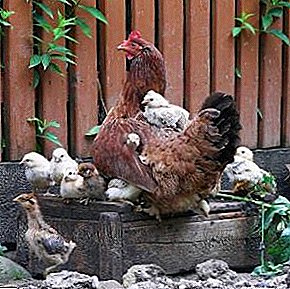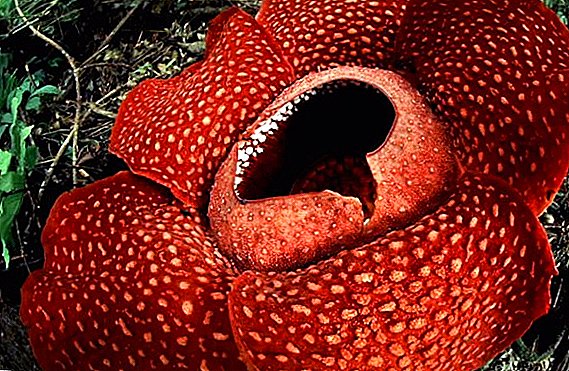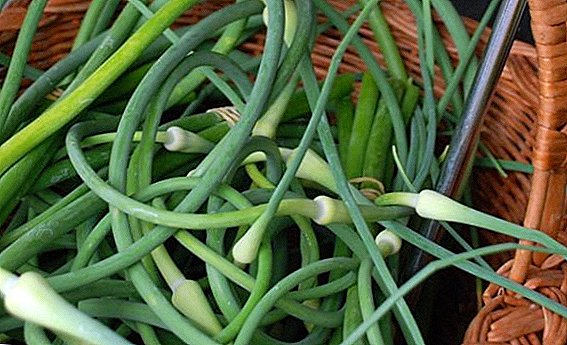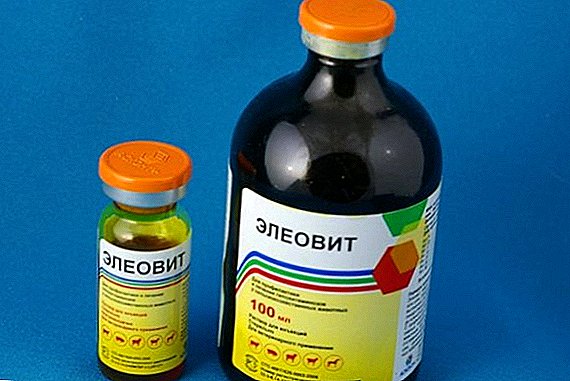
Poultry often suffer from various diseases that affect all individuals in different ways.
Particularly often on large poultry farms laying hens suffer - they develop salpingitis. This disease causes great damage for the entire farm, as the birds stop laying eggs.
Salpingitis can occur in any layer, but all egg-bearing breeds are considered the most susceptible to this disease.
What is salpingitis in birds?
During the course of this disease, the laying hen begins to inflame the oviduct. Each bird carries less and less eggs, which directly affects the income of the entire farm.
Most often young layers of all egg-bearing breeds suffer from this disease. The fact is that they are more vulnerable to any negative factors that may affect the occurrence of this disease.
 Inflammation of the oviduct can occur among the population of any layer.it is not known when this disease was first recorded.
Inflammation of the oviduct can occur among the population of any layer.it is not known when this disease was first recorded.
Its pathogens are the most common pathogenic microorganisms - staphylococcus, which live in large numbers near the birds.
Most likely, this disease arose at the same time when a person began to actively use hens for his own purposes.
Salpingitis is a very dangerous disease. It affects not only the number of eggs that a hen can carry in one year.
In a state of neglect, it can cause the death of the entire population of hens, and this, in turn, is very unprofitable for the economy. The meat of such layers is usually not suitable for use, therefore the level of losses increases significantly.
Causes of disease
 In the manifestation of this unpleasant disease, the main role is played by unfavorable feeding factors.
In the manifestation of this unpleasant disease, the main role is played by unfavorable feeding factors.
If the feed does not contain the required amount of calcium, vitamins A, O, E and choline, then the chickens very quickly develop salpingitis.
That is why farmers need to closely monitor the proper feeding of their birds, because it directly affects its condition.
Besides, the cause of salpingitis can be any traumatic factor. Very often, individuals who were subjected to shocks, fell from a great height, or had a ruptured oviduct suffered from inflammation of the oviduct.
In young hens, salpingitis can be caused by too large eggs that they cannot even carry. They constantly linger in the oviduct, which can cause its rupture.
Another reason for the development of inflammation of the oviduct, is considered a variety of infections that occur on the background of penetration into the body of a chicken of various microorganisms and parasites. Also, salpingitis often develops on the background of inflammation of the cloaca.
Course and symptoms
 One of the first symptoms that indicate the occurrence of inflammation is an increased fat deposition.
One of the first symptoms that indicate the occurrence of inflammation is an increased fat deposition.
It shows that the chicken carries fewer eggs and that it may soon suffer from salpingitis. Veterinarians divide the course of the disease into several stages.
The very first stage is characterized by pathological changes in fat metabolism.. An increase in cholesterol and choline levels is recorded in chicken blood. Gradually, cholesterol begins to be deposited on the body of the chicken, increasing its weight.
During the transition of the disease to the second stage in chickens, a violation of the general metabolism is registered, and the work of the internal organs is also disturbed. Such birds eat little, poorly defecate and look tired.
The next stage of the disease is almost always fatal. During the opening of the diseased bird, the veterinarians discover a complete degeneration of the liver, which indicates serious toxicosis. It is explained by a change in the metabolism caused by an increased concentration of cholesterol in the blood.
Diagnostics
 It is possible to diagnose this disease by the behavior of the bird and by blood analysis. As a rule, salpingitis can occur in acute and chronic form.
It is possible to diagnose this disease by the behavior of the bird and by blood analysis. As a rule, salpingitis can occur in acute and chronic form.
Sometimes the disease is asymptomatic, so if there is the slightest suspicion of inflammation, it is necessary to take a blood test from a chicken. Most often, this condition is characteristic of the chronic course of the disease.
In the acute form of a laying hen, the number of eggs laid per day is significantly reduced. At the same time she eats little and looks completely depressed and tired. After 15 hours, the hen's temperature rises by 1 degree, and after a while cyanosis of the crest appears.
In order to accurately diagnose the disease, it is necessary to take a sick bird in hand and examine it in detail. Palpation will feel that her stomach is enlarged.
At the same time the bird feels discomfort, therefore when walking it drags along the ground. In more advanced cases, the chicken cannot walk. As a rule, without treatment, the bird dies in just a few days, causing damage to the entire economy.
Treatment
 Immediately after the diagnosis of salpingitis, the bird must be quickly treated, otherwise it may die soon.
Immediately after the diagnosis of salpingitis, the bird must be quickly treated, otherwise it may die soon.
As a rule, the treatment of the disease consists in proper nutrition of the laying hen. She should receive a balanced diet, additionally containing vitamins A and E, as well as proteins that will help her get energy to fight the disease.
In more advanced cases, it is almost impossible to do without a medical solution. The patient of a hen is injected into the cloaca 20 ml of vaselineto avoid irritation if the bird has a stuck egg.
In other cases, inflammation should be treated in this way: you need to do several intramuscular injections of synestrol (1 ml of 1% solution), pituitrin (50 thousand units twice a day for 4 days).
If microorganisms are the cause of inflammation of the oviduct, then birds should be given sulfonamides and antibiotics that act on the identified group of microorganisms.
After the completion of antibiotic treatment, one should never forget about probiotics, which will help restore the normal flora microflora.
Prevention
 The main prevention of inflammation of the oviduct is a fully balanced diet in laying hens.
The main prevention of inflammation of the oviduct is a fully balanced diet in laying hens.
Particularly attentive to the diet of the bird should be treated at the moment when they begin to lay: immediately after puberty and after the winter break. It is at these moments that the birds are most vulnerable.
In addition to the feed you can add vitamins and calcium, however, it is necessary to take into account the productivity of each bird. It is also desirable to fully control the lighting mode in the hen house so that the birds get enough rest.
As prevention, laying hens can be given potassium iodide in the amount of 3 mg iodide per adult chicken. Sometimes farmers give 40 mg of chlorane chloride for 20 days. This will help make the chicken more resistant to various unpleasant infections that can weaken the hen and cause salpingitis.
Conclusion
Salpingitis is a common disease. Most often it occurs in chickens of egg breeds, therefore, breeders need to especially carefully monitor the health of their birds.
Launched salpingitis quickly becomes the cause of the death of the hens, which is reflected in the total income of the farm, so a healthy bird is the key to the success of each farmer.












